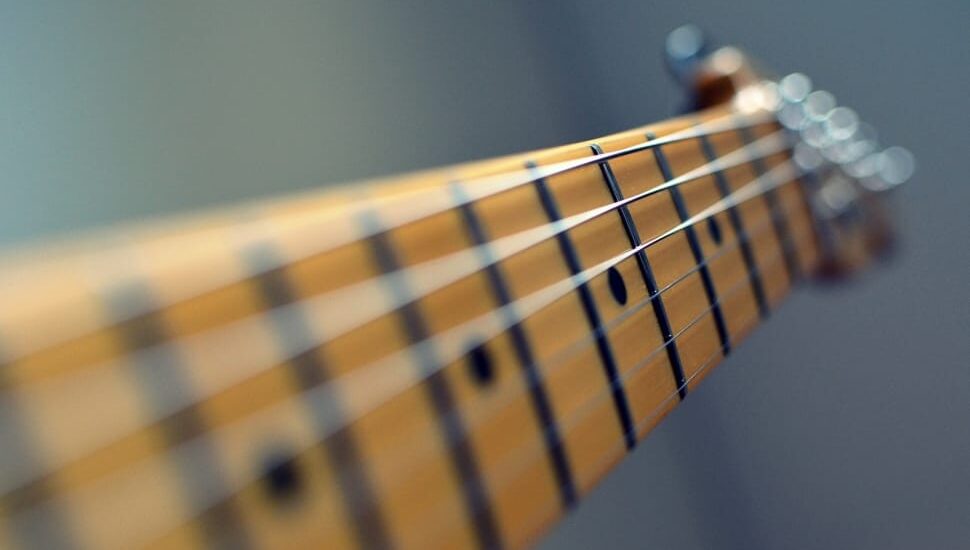If you’ve ever wondered, “why do some guitars have a zero fret?”, you’re in the right place to get all the answers. This comprehensive guide will walk you through every aspect of this often-overlooked guitar feature.

What Is a Zero Fret?
A zero fret is a unique addition you might find on some guitars, situated immediately before the nut at the top end of the fretboard. It appears almost like any other fret on the guitar but is uniquely placed to serve distinct purposes that go beyond mere aesthetics.
Unlike conventional guitar setups where the strings rest against the nut, in a guitar equipped with a zero fret, the strings rest against this particular fret, allowing for some specific advantages in terms of playability and sound.
Why Do Some Guitars Have a Zero Fret?
Below, we talk about the functionality of a zero fret and also the benefits…
The Functionality of a Zero Fret
So, what does a zero fret do? Its primary role is to offer consistent action and improved intonation. Action, in guitar terms, refers to the height of the strings above the fretboard.
Uniform action means that the distance from the strings to the fretboard remains fairly constant as you move your hand up and down the neck, making it easier to maintain a consistent playing style. In a guitar with a zero fret, the strings lie directly above this fret when played open.
This provides the string with a definitive, consistent height across the fretboard. Such uniformity can make the guitar feel more responsive, and in many cases, more comfortable to play.
Additionally, the zero fret helps maintain the tonal quality of open strings. Normally, open strings (those not being pressed down to create a note) can sound different from fretted notes. A zero fret helps in creating a more unified tone, making open strings sound more in line with fretted ones.
Read more guitar topics here – Guitar Questions: Get the Right Answers to Your Burning Questions
Benefits of a Zero Fret
Understanding the benefits of a zero fret can offer insight into why some manufacturers opt to include this feature in their guitar designs. Here are the key advantages broken down:
Improved Intonation
Intonation refers to the guitar’s ability to stay in tune across the entire fretboard. The zero fret contributes to more accurate intonation by creating a uniform point of contact for the strings, thereby ensuring that the guitar remains better tuned even as you play up and down the neck.
Easier String Bending
If you’re a fan of blues, rock, or any style that requires string bending, the consistent action provided by a zero fret can make this technique more manageable and smoother.
Uniform Action
The zero fret helps maintain a steady action, or string height, across all six strings. This can result in an instrument that feels more balanced and easier to play, whether you’re strumming chords or picking single notes.
Tonal Consistency
Having a zero fret means that the tonal characteristics between open and fretted notes are more consistent. This can result in a more unified sound, making your playing feel more cohesive.
Ease for Beginners
For those new to the world of guitars, a zero fret can offer a more forgiving and consistent platform for learning. The uniform action and consistent tonal quality can make it easier to produce clean notes and chords, thus making the learning process a bit more manageable.
In summary, a zero fret is not just a design quirk; it has meaningful implications for how a guitar plays and sounds. From improved intonation to making the guitar more accessible for beginners, a zero fret can offer a range of advantages that can enhance your musical experience.
Conclusion: Why Do Some Guitars Have a Zero Fret?
In this comprehensive exploration of the zero fret, we’ve delved into its definition, its functionality, and the numerous benefits it offers to guitarists of all levels. It’s clear that a zero fret is far from being a mere design afterthought or aesthetic choice. Instead, it serves meaningful and specific roles in how a guitar performs.